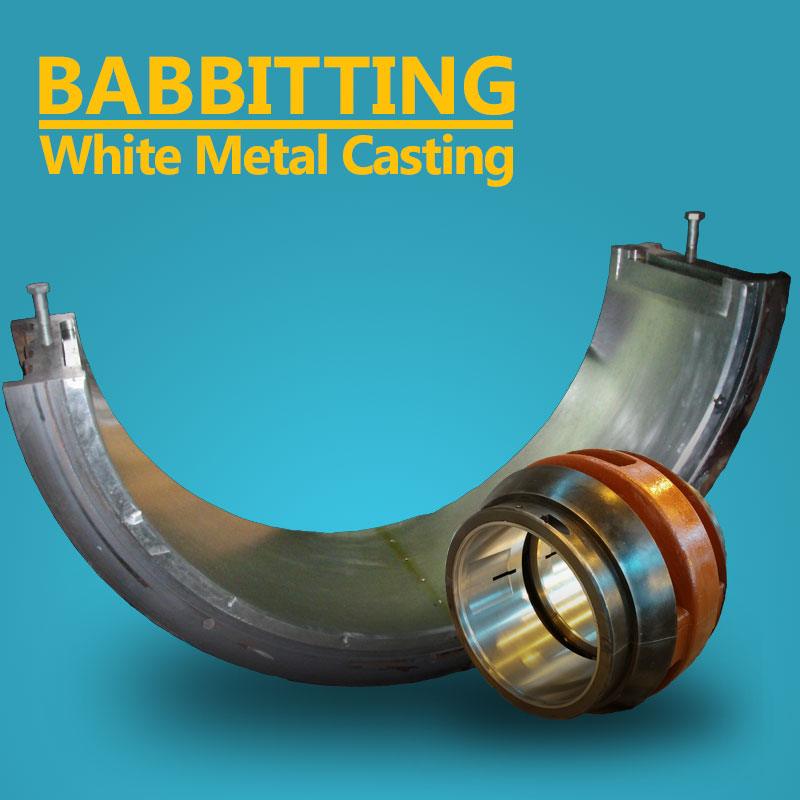SOMP can deliver cast products of almost any alloy type. The composition of our casting products are regulated using our spectrometer with up to 0.1% precision.
Our alloys include the following:
- iron based: steel, cast iron, manganese steel, white iron…
- copper based: aluminum bronze, lead bronze…
- aluminum based
- tin based: see babbiting
Babbitt metals, widely known as white metals, are comprised principally of tin alloys or lead alloys. In the babbitting process, the relatively soft bearing material (babbitt) is bonded to a stronger supporting base metal, typically mild steel, cast iron, or bronze. The bonded bimetal material is shaped and machined to make plain, fluid film lubricated bearings for a wide variety of automotive, industrial, and marine applications.
Even though lead-base alloys enjoy a cost advantage, we use tin-based alloys for environmental and longevity issues
At SOMP we use the static casting (hand casting) while making sure that the adhering process of the babbitt material to a bearing is controlled during the process. The white metal is then cast and cooled rapidly in order to prevent porosities. The bearing can then be machined to required dimensions and tolerances.

Heat treatment is a controlled process used to alter the microstructure of metals and alloys such as steel and attain the desired mechanical properties. The most common reasons that metals undergo heat treatment are to improve their strength, hardness, toughness, ductility, and corrosion resistance. Different types of heat treatment addresses different types of properties change.
Quenching (metal hardening)
The use of this treatment will result in an improvement of the mechanical properties, as well as an
increase in
the level of hardness, producing a tougher, more durable item. Hardened workpieces are usually tempered
or
stress relieved to improve their dimensional stability and toughness.
Tempering
Tempering is done to develop the required combination of hardness, strength and toughness or to relieve
the
brittleness of fully hardened steels.
Tempering is generally considered effective in relieving stresses induced by quenching in addition to
lowering
hardness to within a specified range, or meeting certain mechanical property requirements.
Annealing
It is the process of heating and slowly cooling metal (usually steel) to remove stress, make the metal
softer,
refine the structure, or change its ductility.
Normalizing
Normalizing process is a heat treatment process for making material softer but does not produce the
uniform
material properties as produced with an annealing process.
The most common reason for the normalizing process is to adjust mechanical properties to suit the
service
conditions. Other purposes of normalizing include: relieving internal stresses, refining grain
structure,
and improving machinability.
